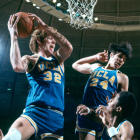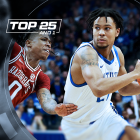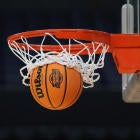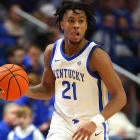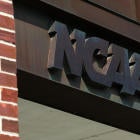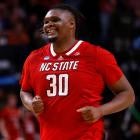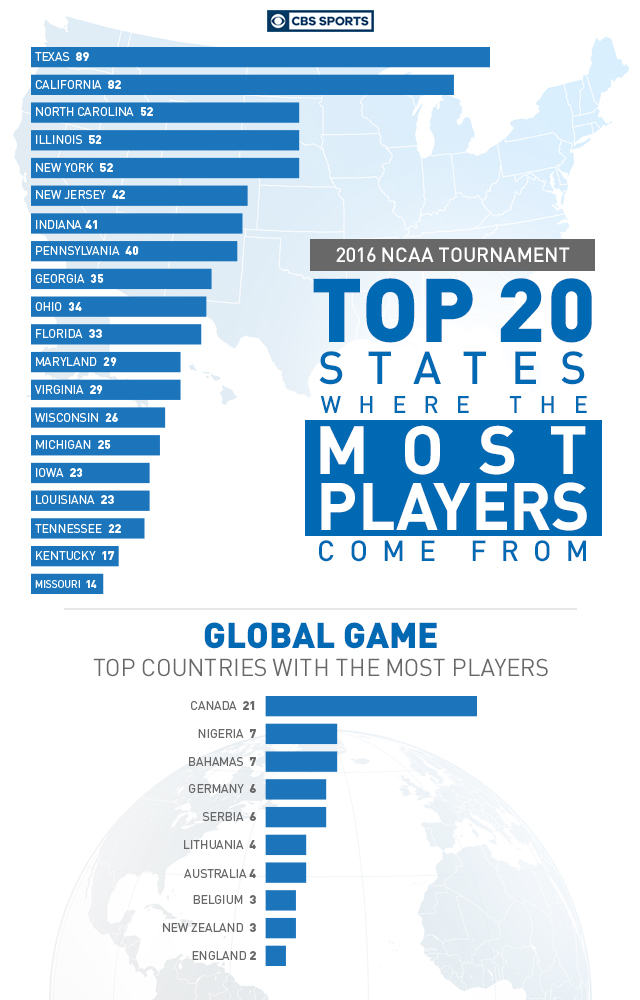
Sometime in the next three weeks America is going to meet some 20-year-old basketball player we never knew existed. Instantly, March Madness puts a microscope on relatively unknown players who will make dramatic plays to decide basketball games we gamble on and enjoy watching.
What becomes our "One Shining Moment" jingle is these players' culmination from a long journey.
They are from the inner city, the suburbs and rural America -- some with shared experiences, others who only share basketball.
They are from overseas -- recruited here with dreams of a better life that does or doesn’t pan out.
They are transfers from other schools -- players who needed junior college first or left their four-year school searching for something more.
This year, the players on the NCAA Tournament’s 68 teams come from 47 states (sorry, Vermont, North Dakota and Maine) and 47 countries (if Canada was a state, it would rank 19th). You’re more likely to see a NCAA Tournament player in the next three weeks from Nigeria than Nevada. College basketball is truly the world’s game. International players comprise 11 percent of the NCAA Tournament players.
Africa alone makes up 19 percent of the international players in the bracket. Ten of the 54 African countries are represented this year.
Don’t mess with Texas, which leads all U.S. states with 9 percent of the tournament’s 1,042 players listed on team rosters. California is second at 8 percent. Basketball hotbeds North Carolina, New York and Illinois are tied for third at 5 percent.
College basketball’s never-ending transfers could play a major role in this tournament. On the NCAA Tournament rosters, 22 percent of the players transferred into their current school. That rate counts four-year transfers and junior college transfers.
(One important qualifier for that statistic: It’s counting all players on the roster, including walk-ons and transfers who aren’t eligible this season. The NCAA has said about 40 percent of all men’s basketball players who enter Division I directly out of high school leave their initial school by the end of their sophomore year. Of the 528 players who changed schools in 2015, the NCAA said 44 percent transferred to another Division I school.)
Because there are fewer players on basketball rosters, “free agency” in hoops is usually more significant than in football. This year is again a Who’s Who of transfers who played major roles to reach March Madness in 2016.
We first became familiar with Jarrod Uthoff in 2012 when his coach at the time, Wisconsin’s Bo Ryan, initially restricted Uthoff from transferring to 26 schools — the entire Big Ten and ACC, plus Iowa State, Marquette and Florida. America took Uthoff's side and now he's an All-American at Iowa averaging 18.9 points.
Michigan State is a trendy national championship pick. It sure helps that Sparty has 48-percent 3-point shooter Bryn Forbes (Cleveland State) and 43-percent 3-point shooter Eron Harris (West Virginia).
Where would No. 3 seed Miami be without going into the Big 12 and getting transfers Sheldon McClellan (Texas), Angel Rodriguez (Kansas State) and Kamari Murphy (Oklahoma State)?
What about No. 3 seed Texas A&M, whose top two scorers are transfers Jalen Jones (SMU) and Danuel House (Houston)?
What about No. 4 seed Iowa State, which gets key contributions from transfers Jameel McKay and Deonte Burton (Marquette) and Abdel Nader (Northern Illinois)?
Maryland rose to No. 2 in the country thanks in part to transfers. Although the Terps have struggled lately, Robert Carter Jr. (Georgia Tech) and Rasheed Sulaimon (Duke) are arguably their most consistent players.
Way out West, Gonzaga is led by two SEC transfers: Kyle Wiltjer (Kentucky) and Eric McClellan (Vanderbilt). Way out East, Connecticut is led by two graduate transfers -- Sterling Gibbs (Texas) and Shonn Miller (Cornell) -- and former McDonald’s high school All-American Rodney Purvis (N.C. State).
It’s not just prominent schools benefitting from transfers, of course.
Northern Iowa got transfers Paul Jesperson (Virginia) and Wes Washpun (Tennessee). It was Washpun’s buzzer-beating jumper that clanged off the rim, fell through the net and won the Missouri Valley championship for Northern Iowa.
Hampton’s three leading scorers are transfers Reginald Johnson Jr. (Miami of Ohio), Quinton Chievous (Tennessee) and Brian Darden (Radford).
Dayton's leading scorer, Charles Cooke, came from James Madison.
Stefan Jankovic is Hawaii’s leading scorer and rebounder after transferring from Missouri. Ryan Anderson leads both categories for Arizona after coming from Boston College. Missouri won three SEC games this season and Boston College was winless in the ACC. Think they could have used Jankovic and Anderson this season?
Texas has the most former players on NCAA Tournament rosters (four). Missouri, Arkansas, VCU, Wisconsin, Cleveland State, N.C. State, Charlotte and Tennessee each have three. Thirteen percent of the four-year transfers on March Madness rosters came from nine schools in the SEC, which only put three teams into the tournament.
These numbers are a longwinded way of saying of this: College basketball players come from everywhere.
Their stories can be deeply personal and controversial, emotional and funny, and often enlightening. They speak to what college basketball has become -- a fluid carousel of players and rosters constantly in transition.
They all come from somewhere. We’re about to find out where.
Follow and read more from Jon Solomon on Facebook and Twitter.












